Once again I’ve been fortunate to experience Ukrainian culture via my Ukrainian friend: seeing a performance, buying a vyshyvanka, having a typical Ukrainian dinner, and visiting the open-air museum.
A local performance
Julia, who invited me to the Carpathians and the ‘egg writing’ master class earlier, invited me to a performance by the Lviv State Palace of Aesthetic Education for School Youth. Apparently, young people there receive education in singing, dancing — and even French.
I truly appreciated the varied and skilled dancing and singing — here are some examples. (Note: the videos can take a few minutes to start playing after clicking play.)

Buying a vyshyvanka
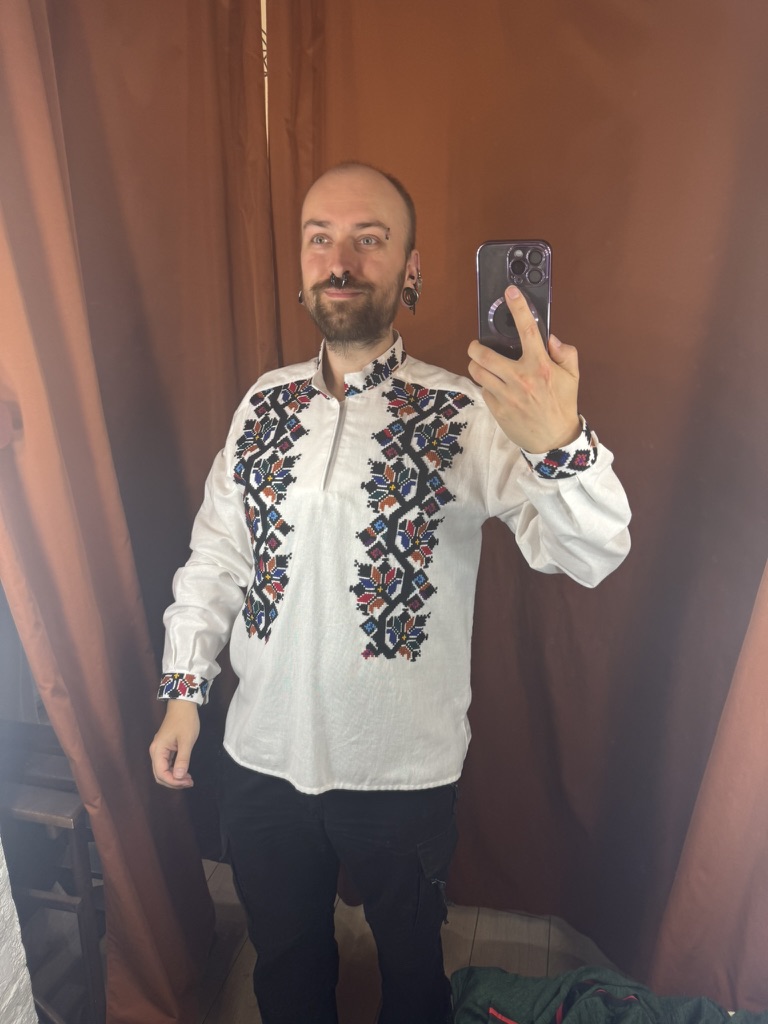
We had to step out during the performance to buy a vyshyvanka for me — a typical Ukrainian embroidered shirt.
I needed a vyshyvanka (a) for the dinner described below, (b) as a proper non-gimmicky souvenir for myself and (c) to support the Ukrainian economy.
I think we succeeded quite well at Koza Dereza. This vyshyvanka’s pattern isn’t traditional, but Ukrainians don’t mind and neither do I. I think it suits my eccentricities — wouldn’t you agree?
It took some effort to find a vyshyvanka that I actually liked. Just like back home, most men’s clothing tends to be a bit boring. And the contrast is even starker when you consider how quite skillfully many Ukrainian women uphold (unfair) beauty standards.
Dinner with vyshyvanka and puffins
I was invited to join Julia for a family dinner with typical Ukrainian food. I was welcomed by a rather large crowd — her parents, grandparents, aunt and uncle, cousins, two dogs, and another guest from the Faroe Islands.

The dinner was delicious and featured various types of meats, vegetables, bread, borscht (beet soup), varenyky (Ukrainian ‘ravioli’/’dumplings’), holubtsi (literally ‘pigeons’ but actually stuffed cabbage without any pigeon parts). They offer various drinks, including wine and uzvar (a dried fruit drink). For dessert, there was ice cream with wild strawberries and wild blueberries.
We spoke quite a bit of English during dinner, although I did try some Ukrainian here and there. To my slight regret, understanding Ukrainian and responding is still harder than I’d hoped — but I hope to someday repay their hospitality by speaking proper Ukrainian.


The Faroe Islands guy was an interesting chap. We definitely had interesting conversations and some laughs. But the most awkward story is about a puffin. He once gifted his girlfriend a pet puffin. Then, on a certain day, he was at his girlfriend’s house while she was away, and he was hungry. So he ate her puffin.
To no-one’s surprise, the guy no longer has a girlfriend. To my surprise, though, he lived to tell the tale — and chose to.
Despite the pleasantries, dinner had a deadline because my ‘dormitory curfew’ is 23:00. Julia’s mother offered me some food to take home with me — which is another typical Ukrainian custom, I later learned. (I said ‘Yes, please’, because the food was ‘дуже смачна’!) I even was brought to my dormitory by car — a truly nice thing to do. (I understood it was ‘unsafe for a handsomely dressed man like me to walk alone in the dark’ — and who was I to argue?)
Culture and history in the open air
My friend and I visited the Shevchenkivskyi Hai (the “Museum of Folk Architecture and Rural Life”). In this large forest terrain, various regions of Ukraine are depicted with reconstructions of buildings (or actually moved buildings).
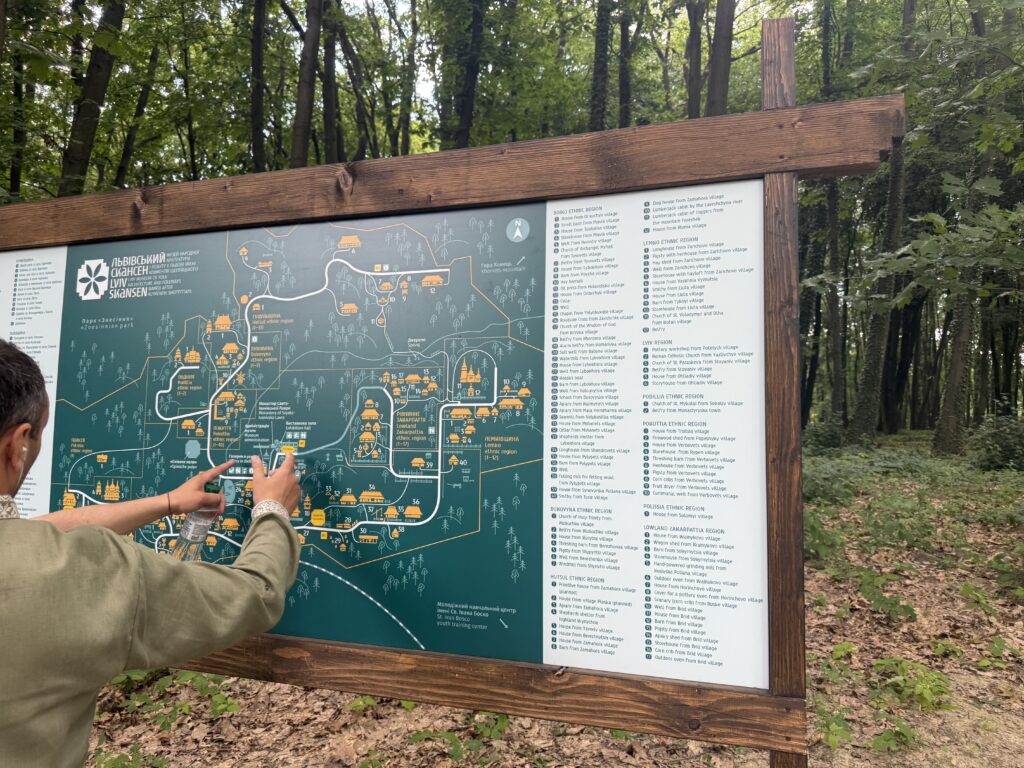
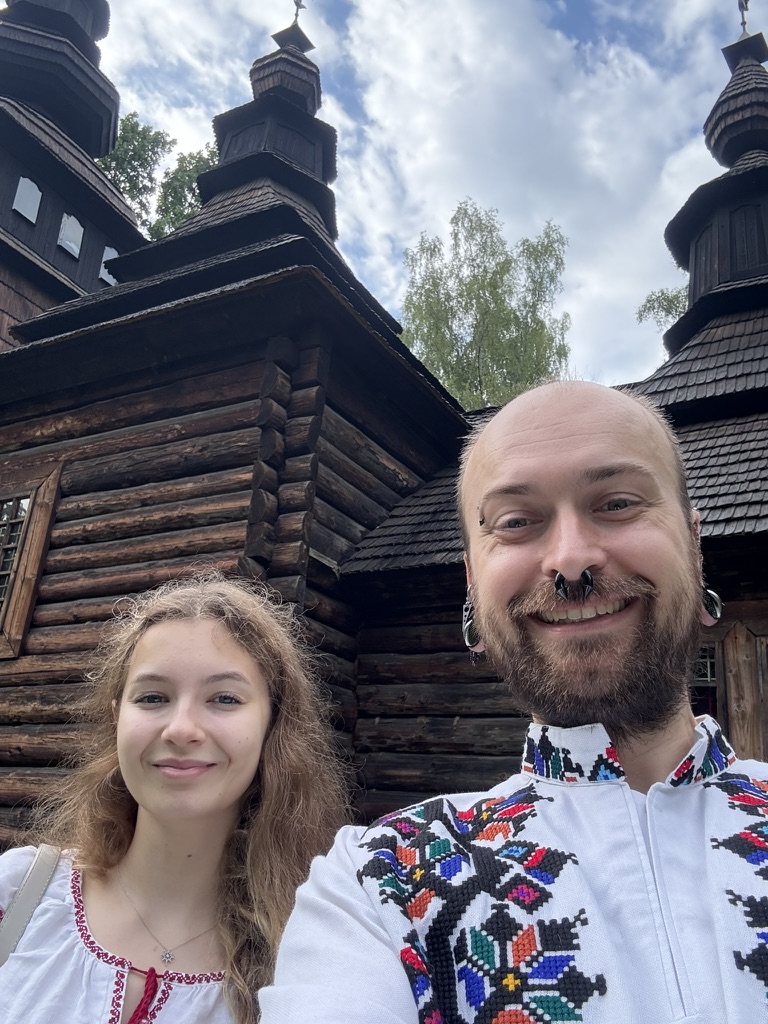
One of the first buildings we encountered was an old church. It has a side-entrance (for the men) and a public entrance (for the women and children) — this tradition has been lost luckily. The ribbons on the cross outside apparently had a meaning as well. Young (mostly unmarried) girls would choose and tie a ribbon before Easter. Each ribbon colour meant something different: the wish to get married first, to marry into wealth, to marry for love, or a ribbon to wish their husband’s return from the army in good health.
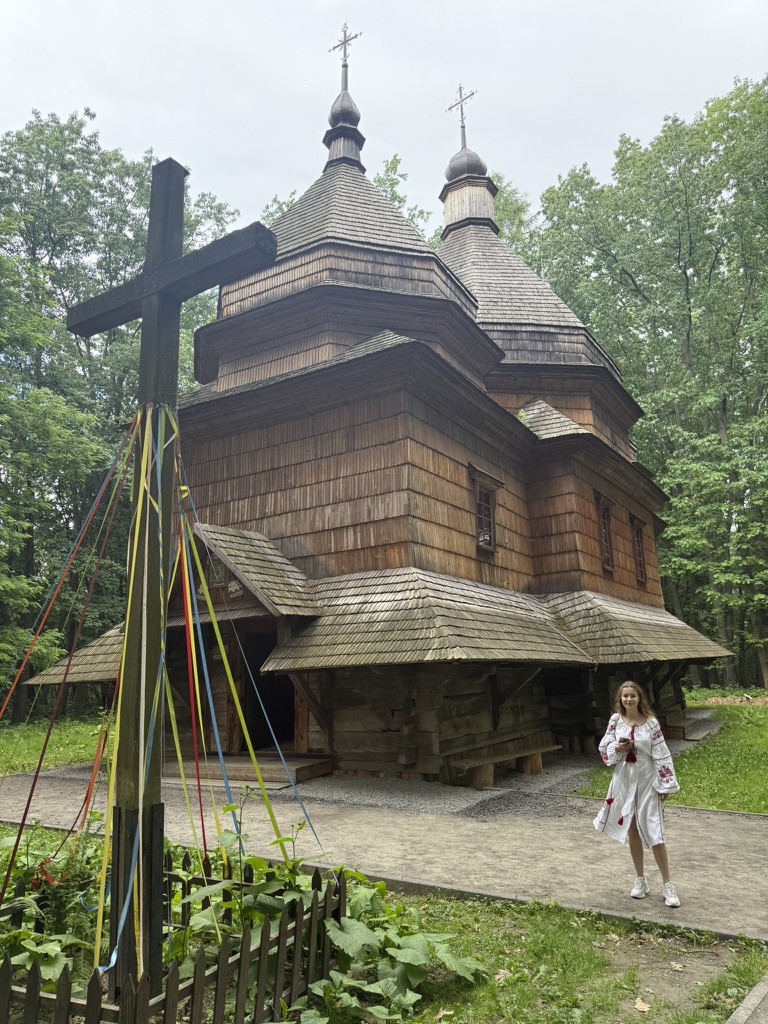
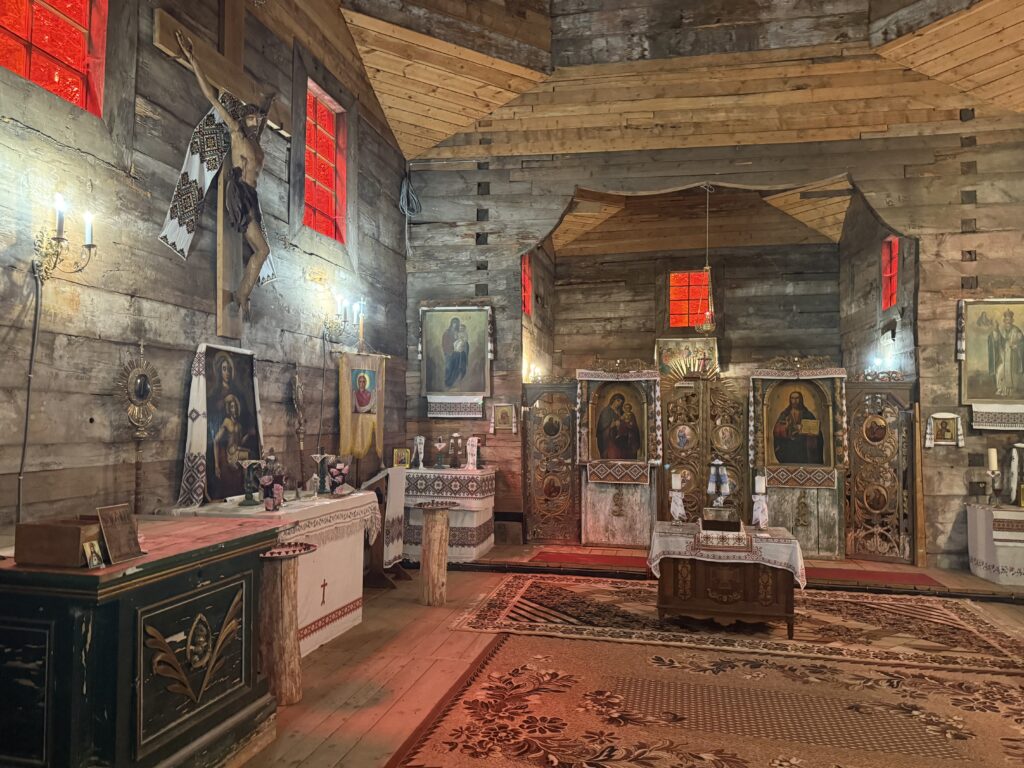
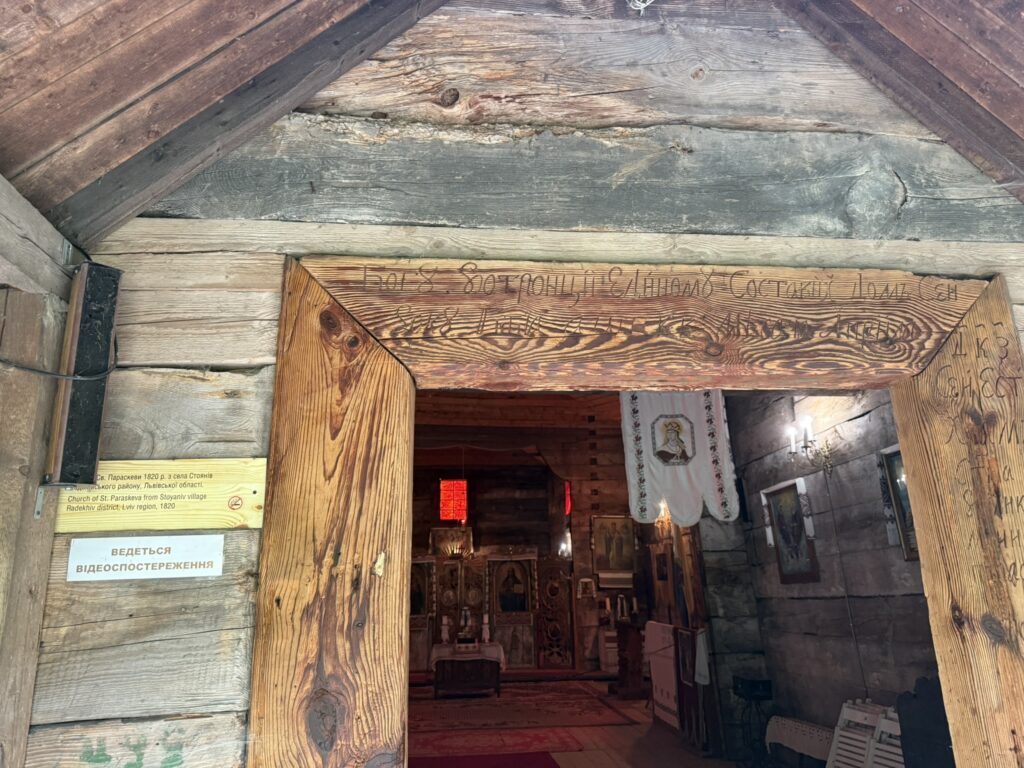
Later we found another more modern church.
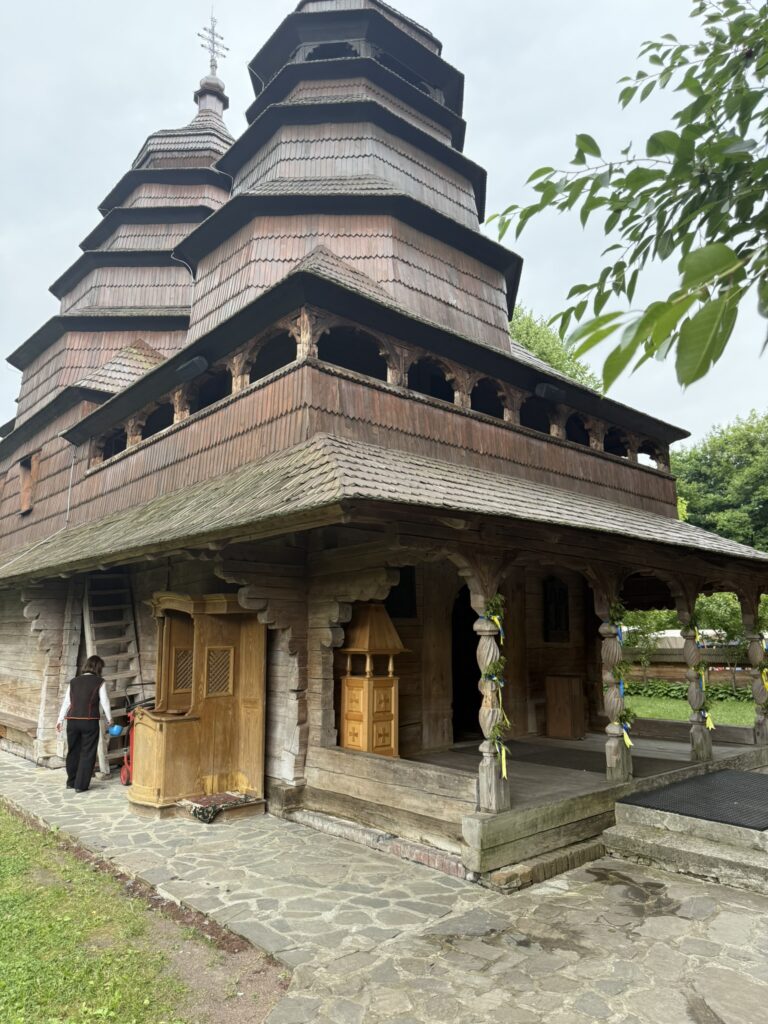

While roaming the grounds, we encountered various buildings and houses from different regions, different times and different wealth.
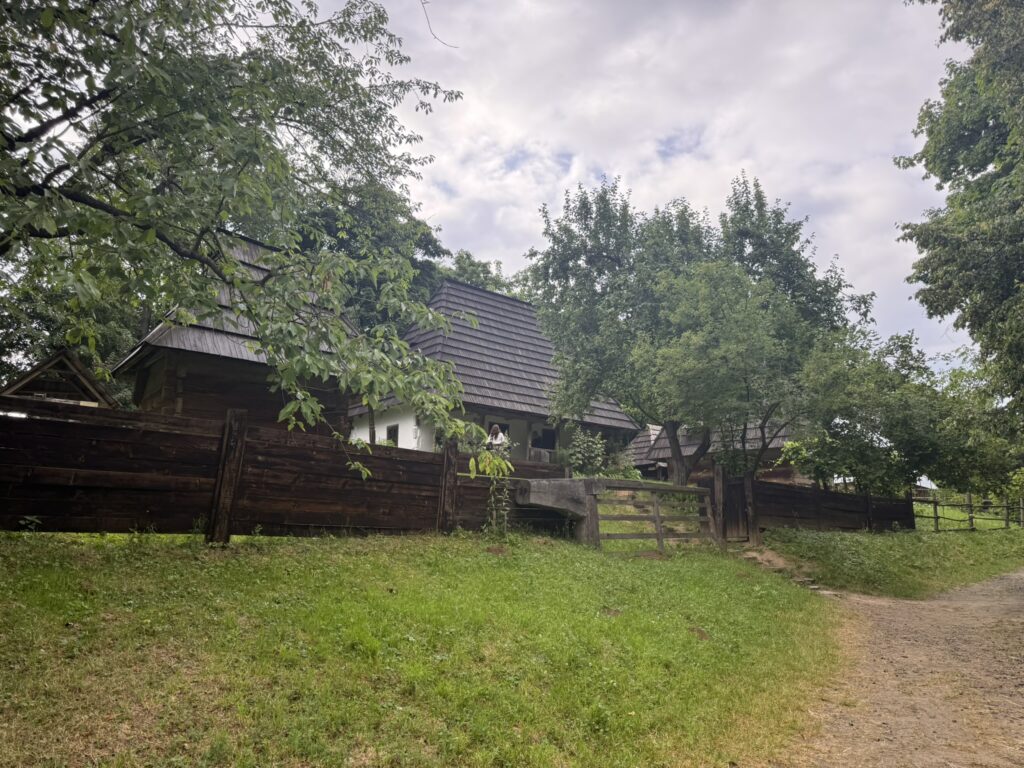
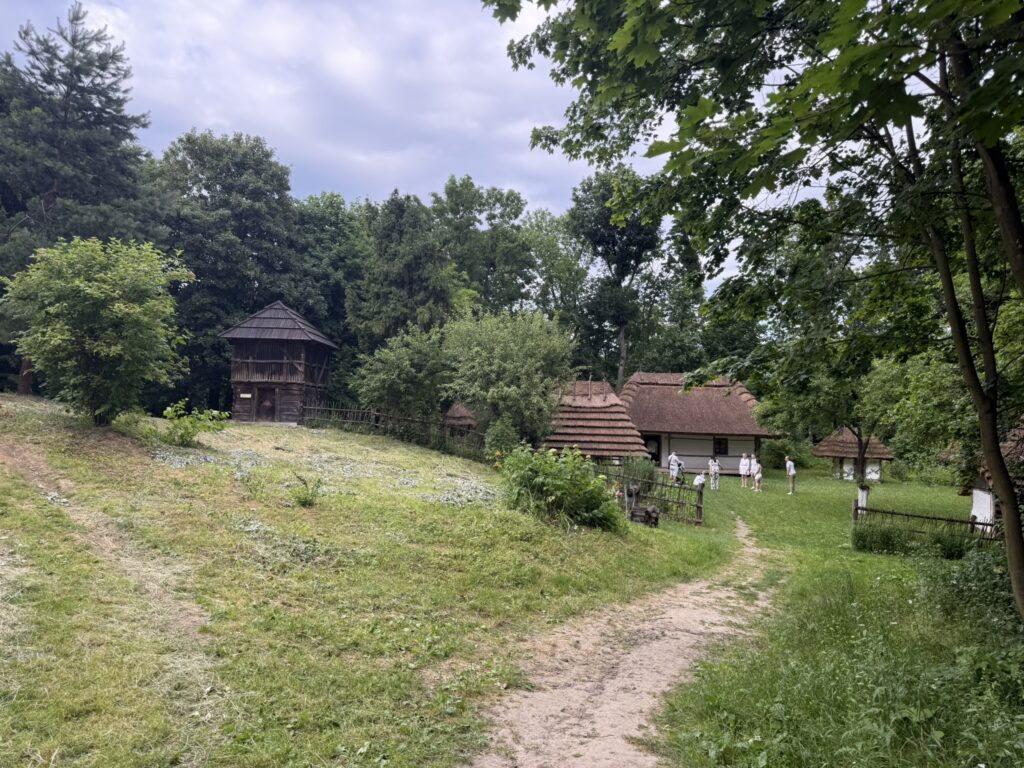
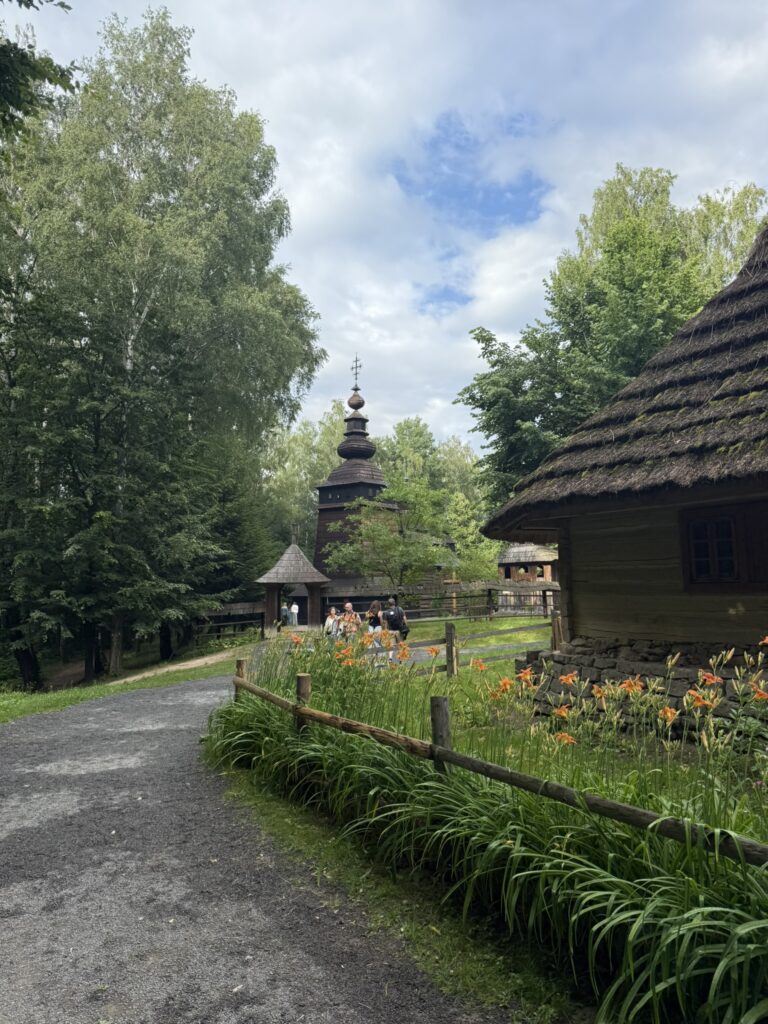
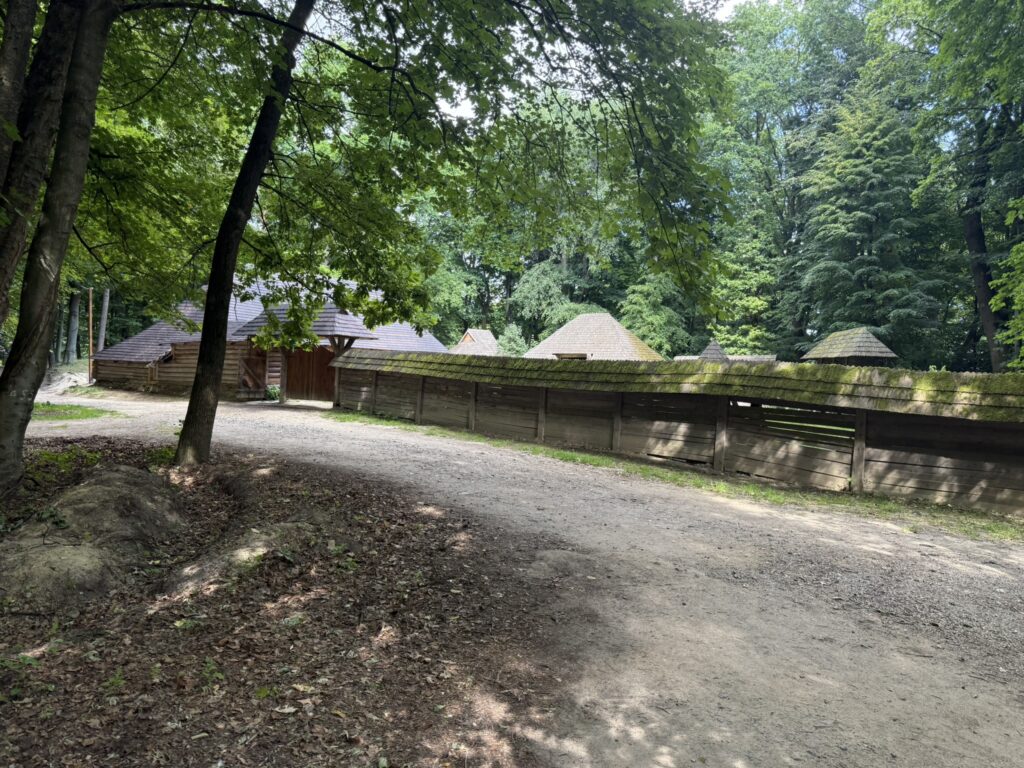
Inside some houses, the differences in wealth and modernity can be seen. The corner benches in the living room seem to be a recurring element.
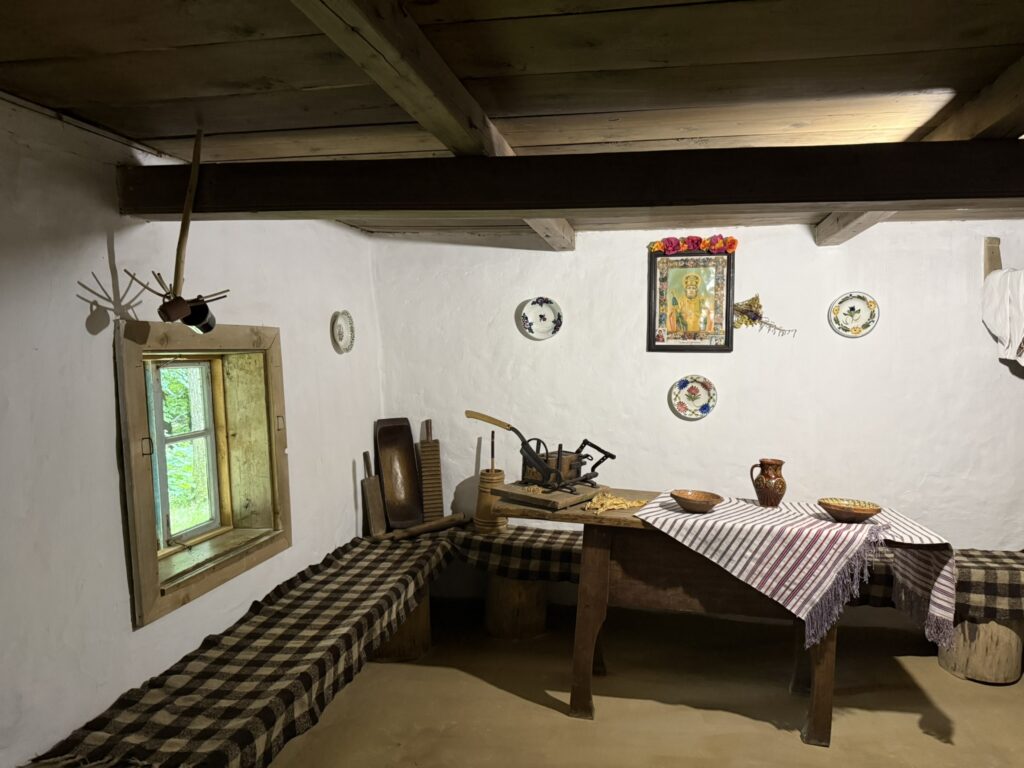
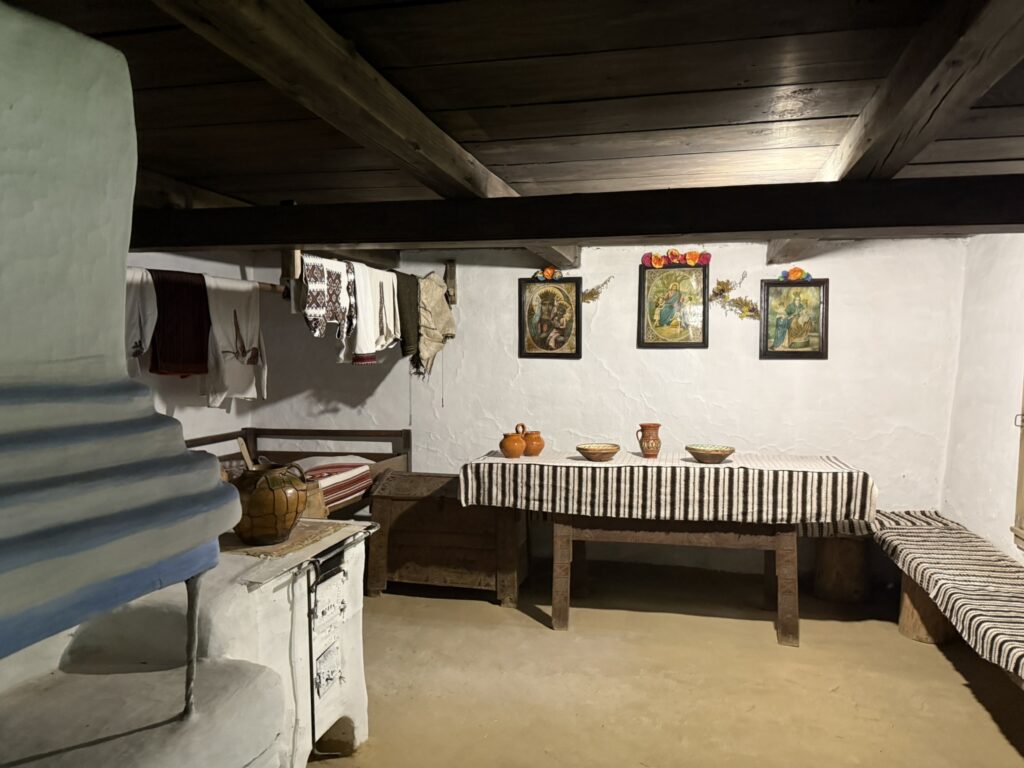
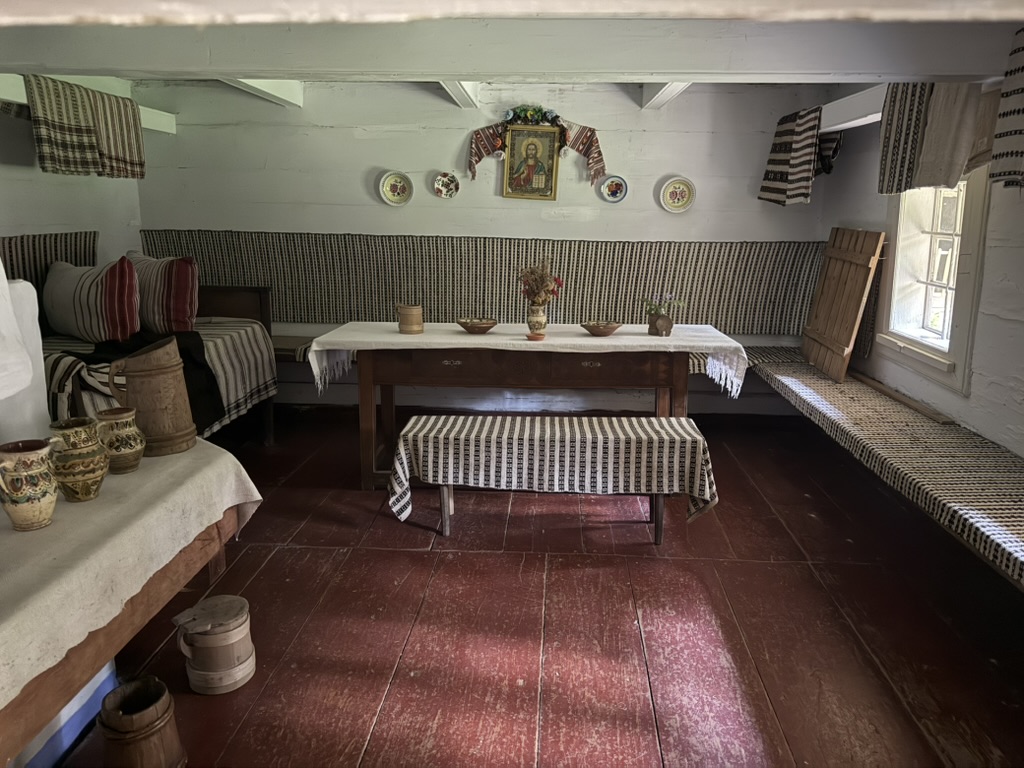
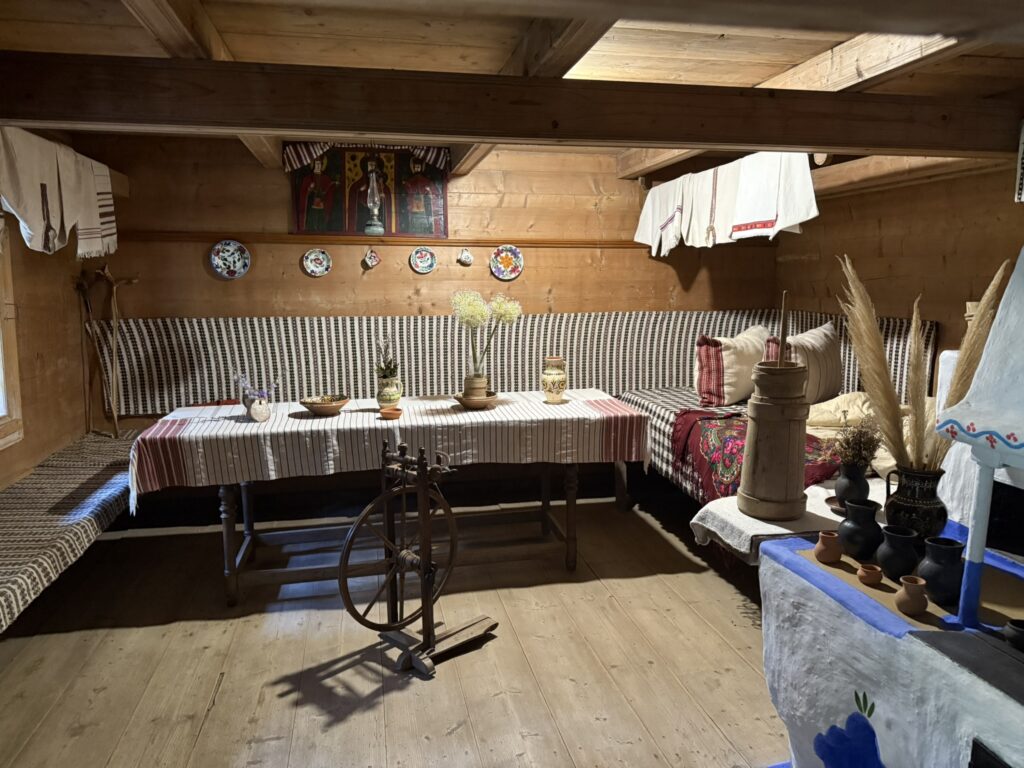
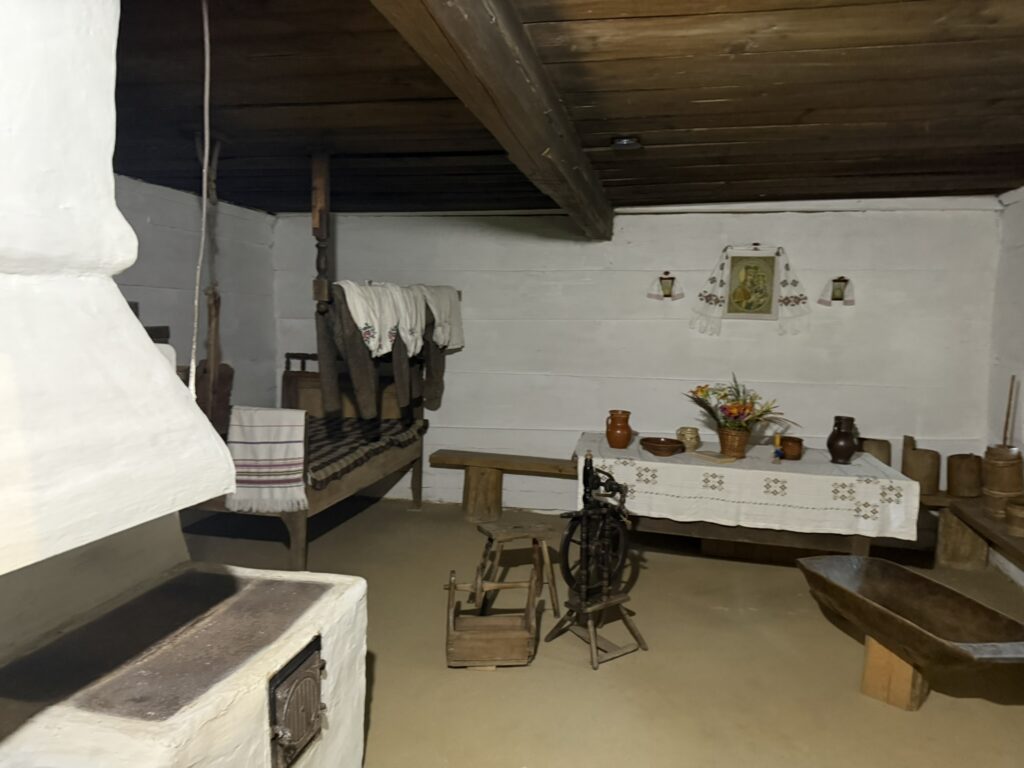
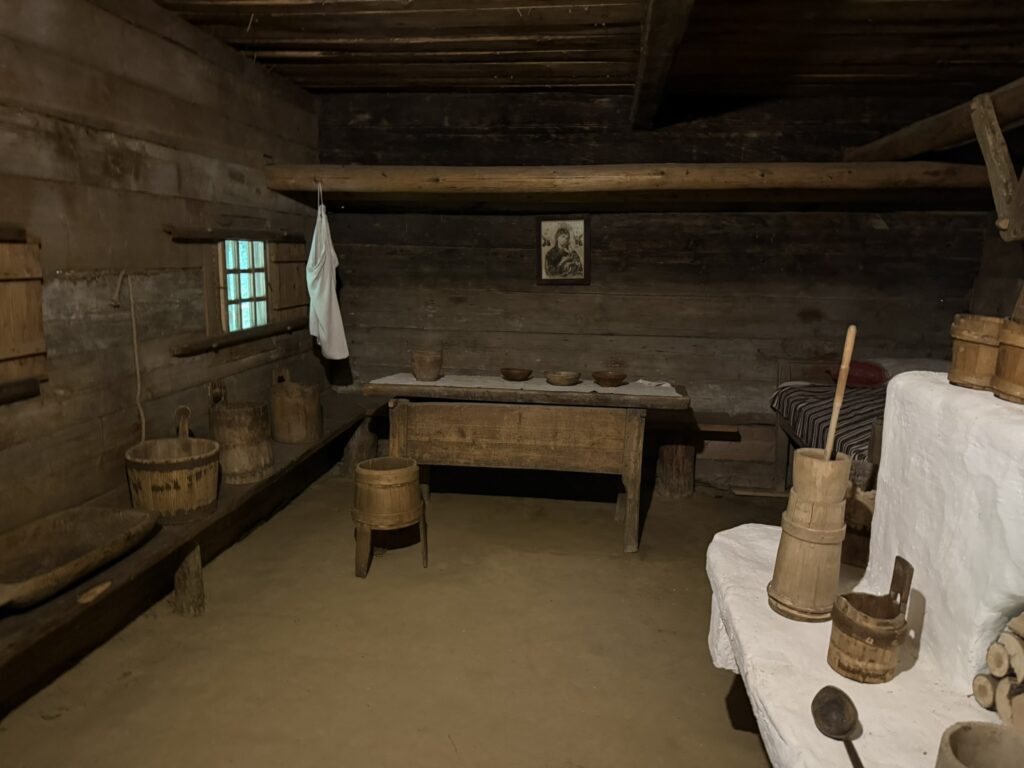
To our utter surprise, Santa Claus seemed to have hidden his sleighs in this open-air museum as well — far removed from Sinterklaas’s church (yes, it is in Ukraine!).
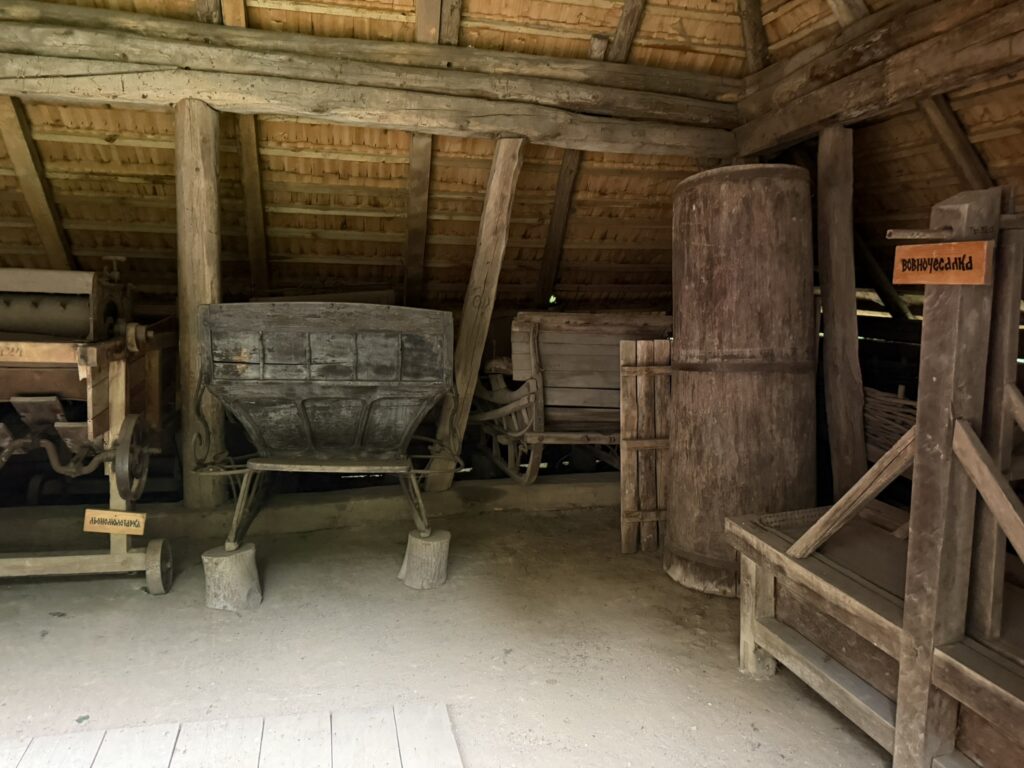
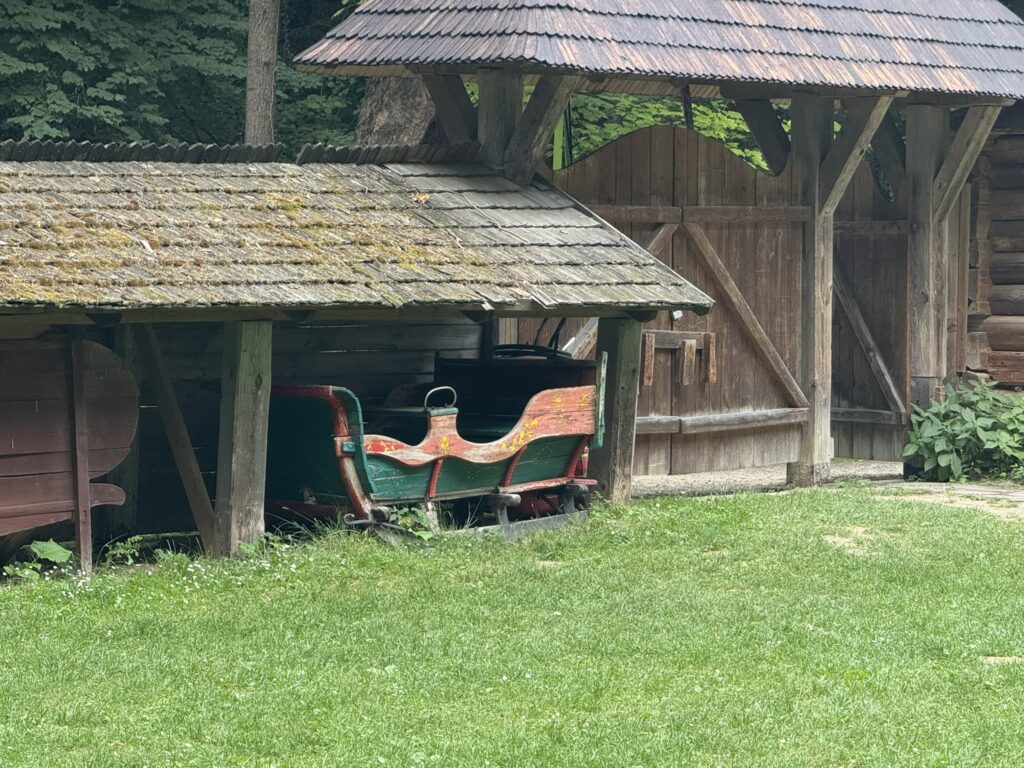
I suspect Santa Claus is plotting to mount a coup against Sinterklaas (the real Saint Nicholas). His strategy is surely to rewrite history through the cunning planting of sleighs in this particular museum, to falsely claim legitimacy on historic grounds. If caught, he will surely assert that ‘anyone can buy a sleigh at the nearest shop’ or have his elfish ‘little green men’ to take over the site. Santa Claus must be russian. (I am happy to see this blog evolving to include proper investigative journalism.)
One of the buildings hosted an exposition — pysanky, old tools, carpets, artistic paintings, pieces of clothing and other old items were on display.
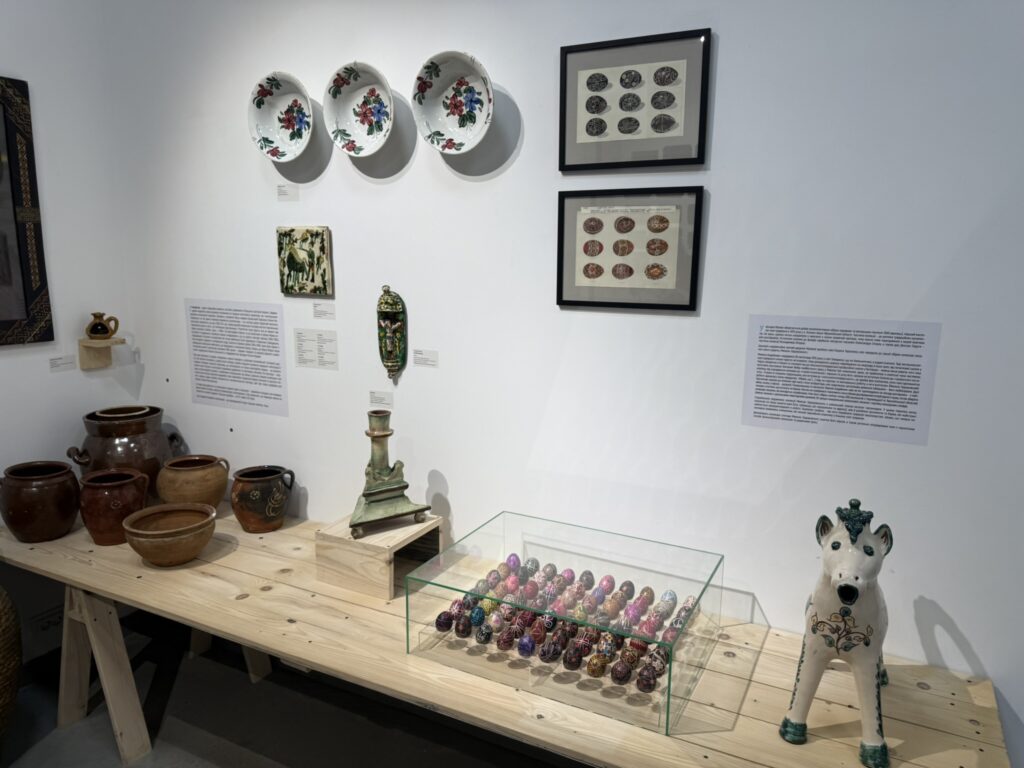
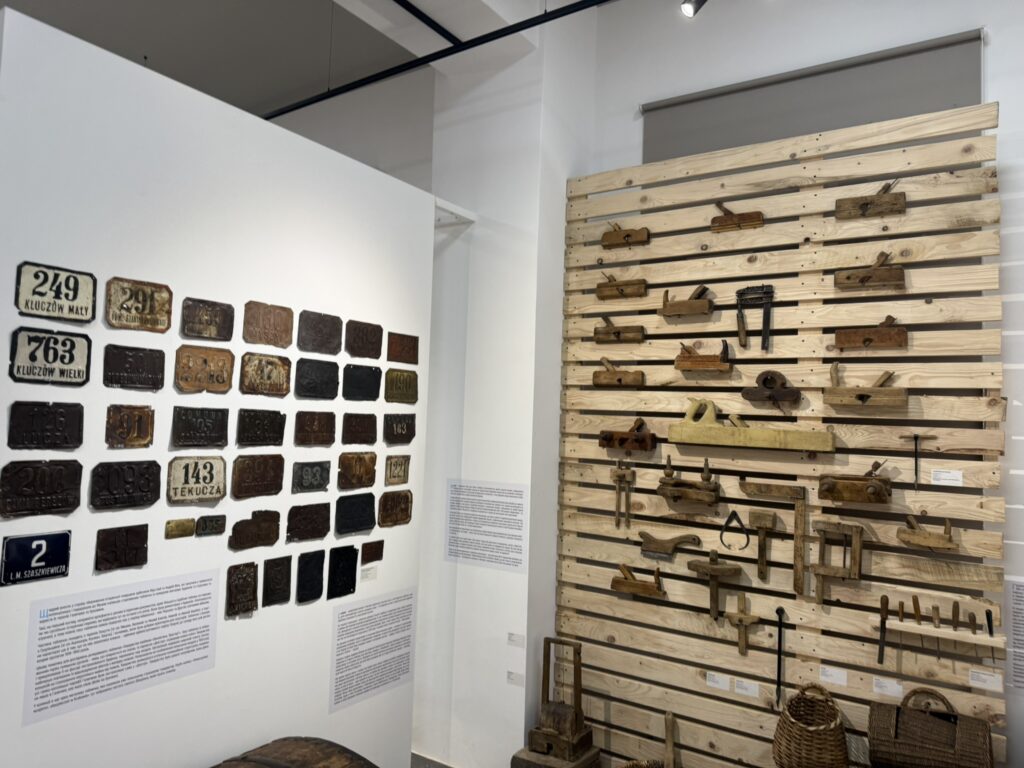
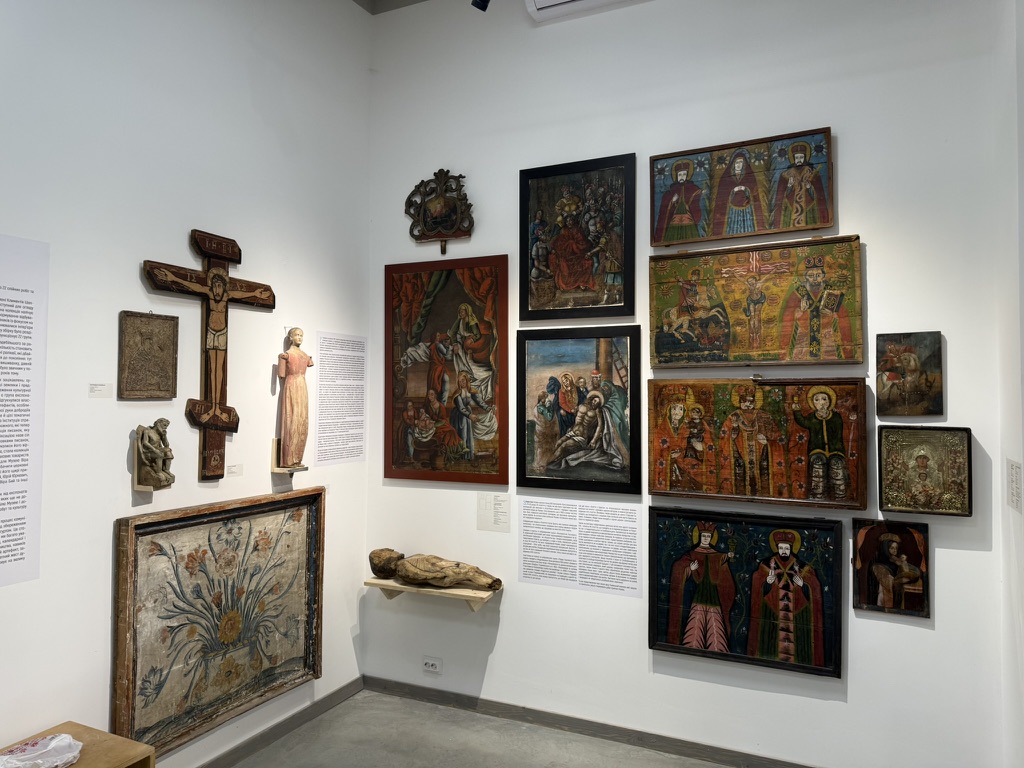
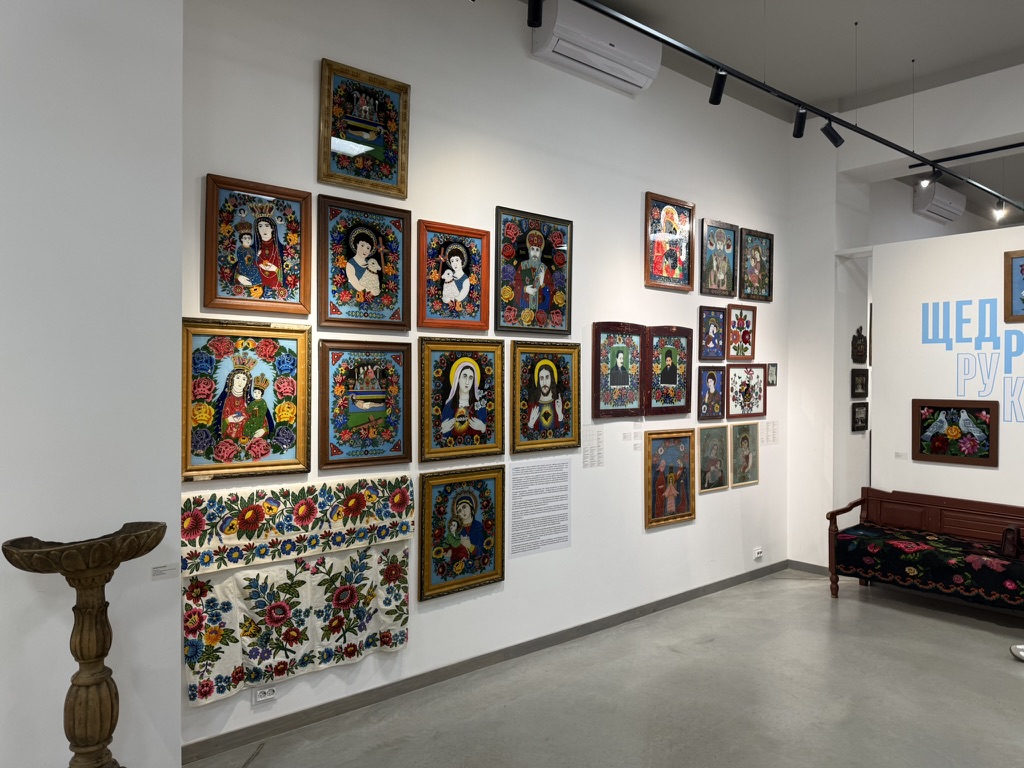

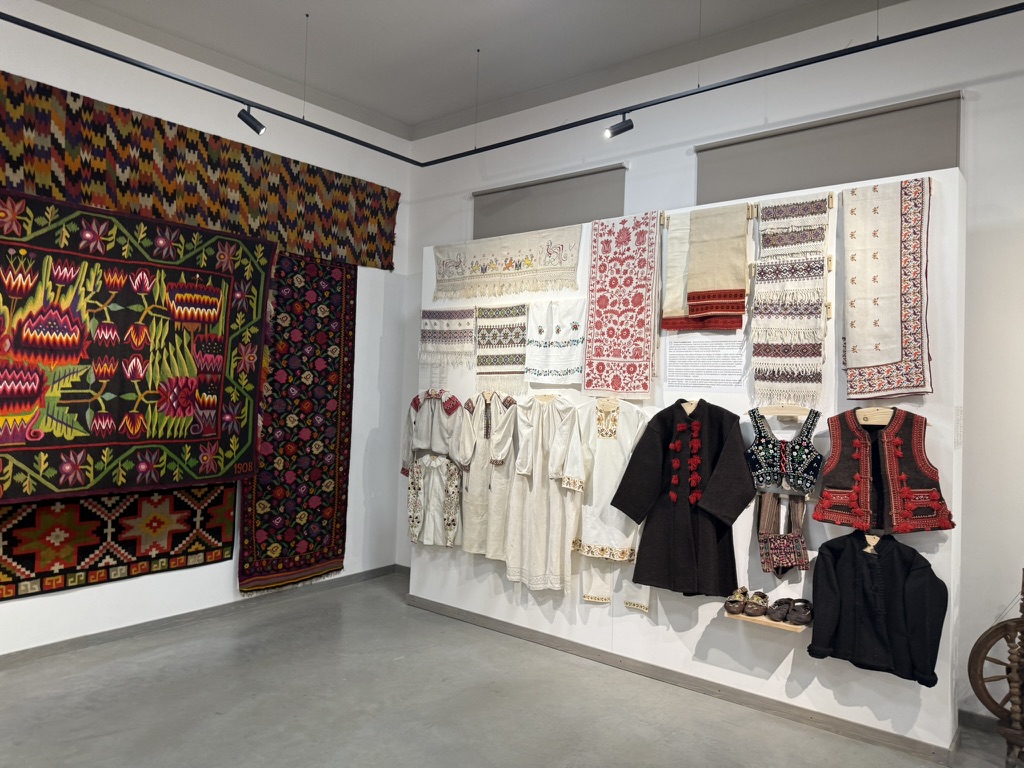
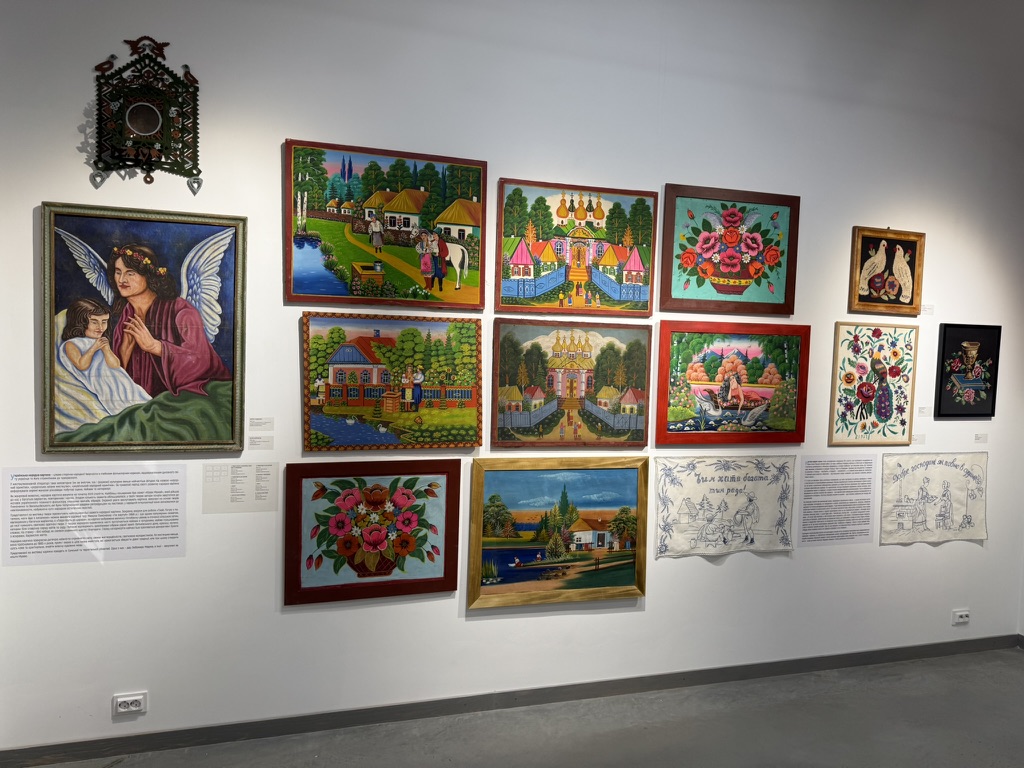
We also visited an old school building.
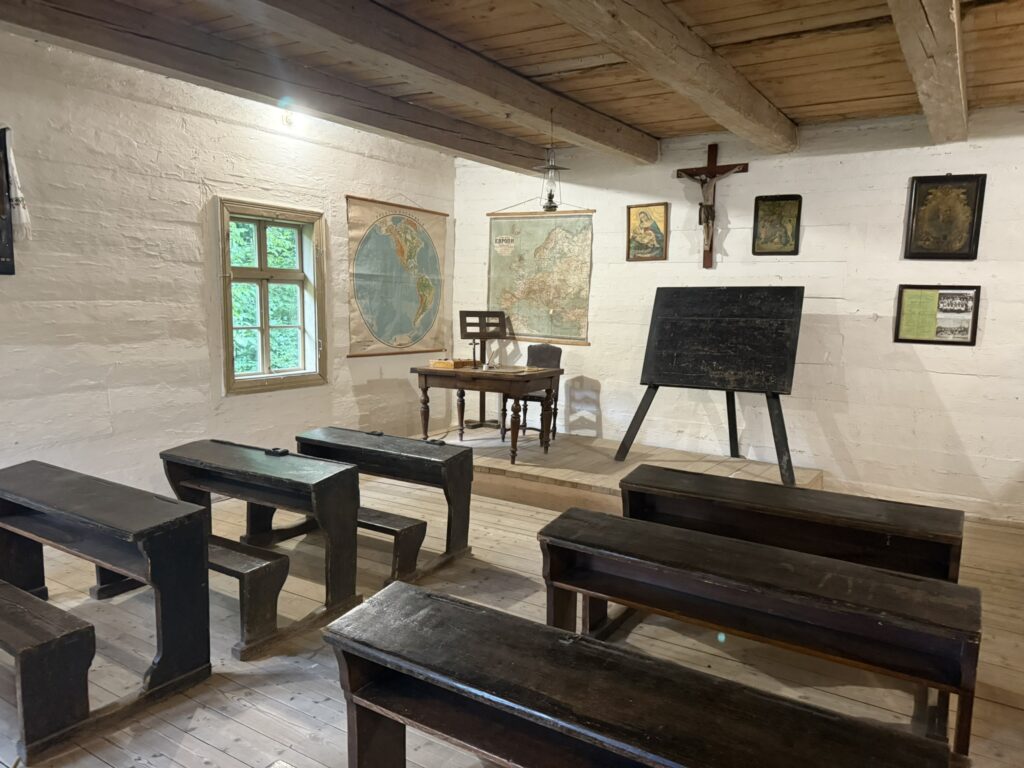
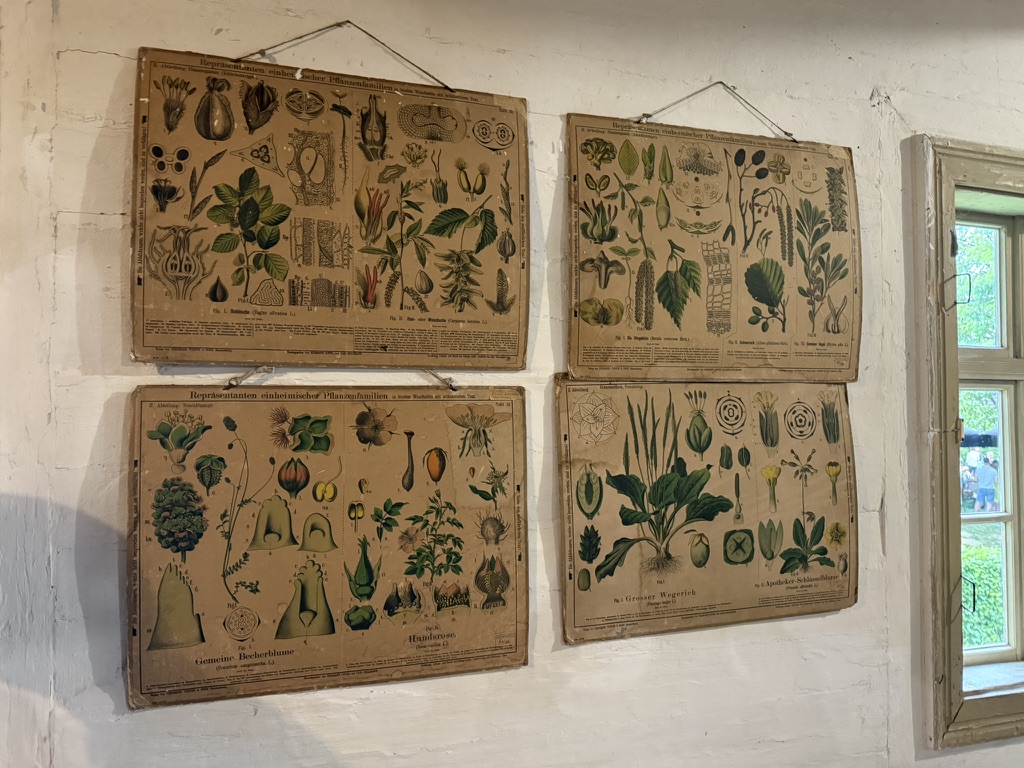
Eventually, we found a market and folk dance event. It started raining soon after, but some people just kept on dancing. (Also: I actually later learned that just before this particular folk music band, the band Draga was performing — the band with one of our course organisers as member!)
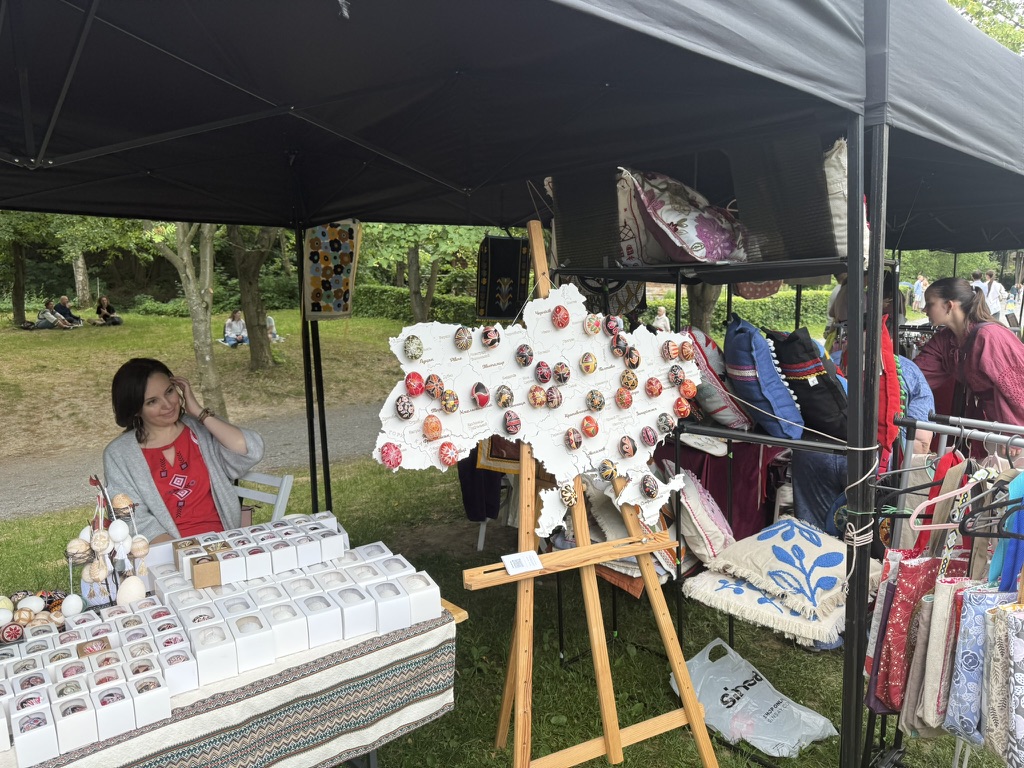
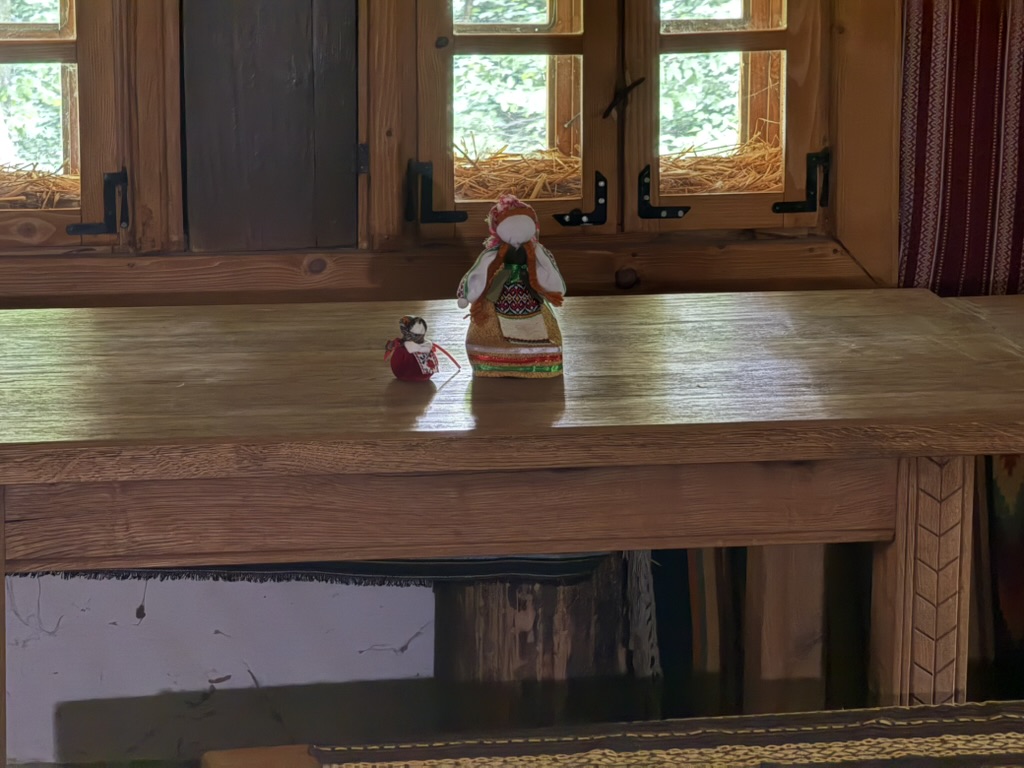
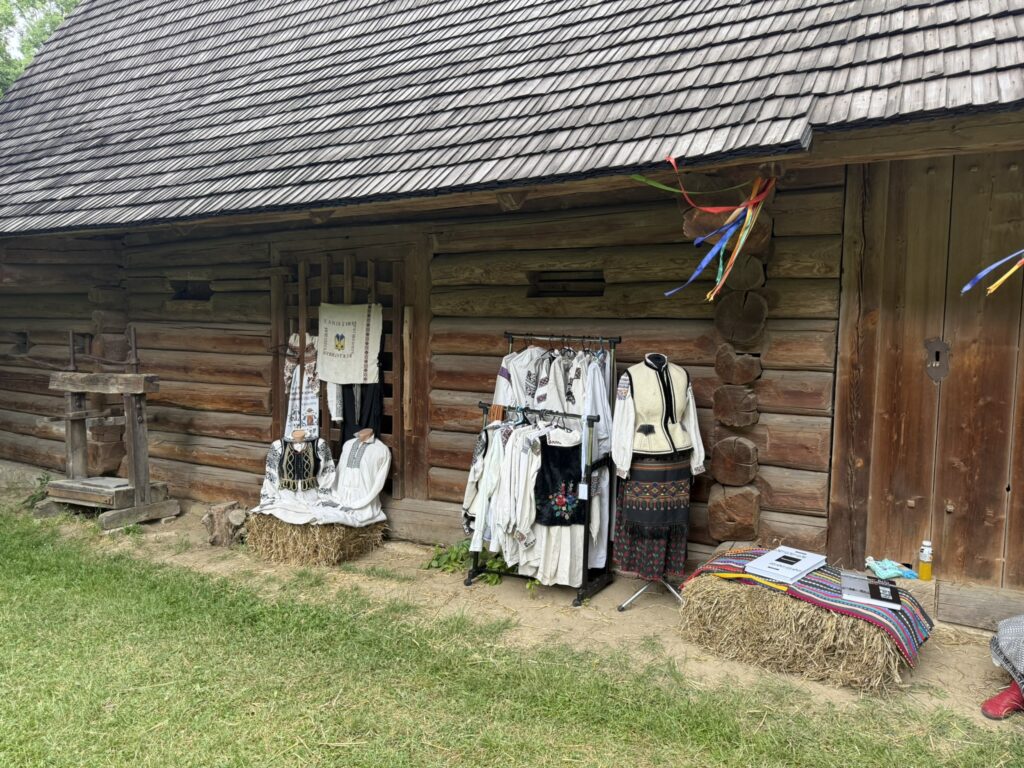
Georgian food
We finished the day by going out for Georgian food, which is quite popular around here. I was recommended to try two iconic Georgian dishes: khinkali and khachapuri!

Khinkali (Georgian dumplings, filled with meat and cheese)
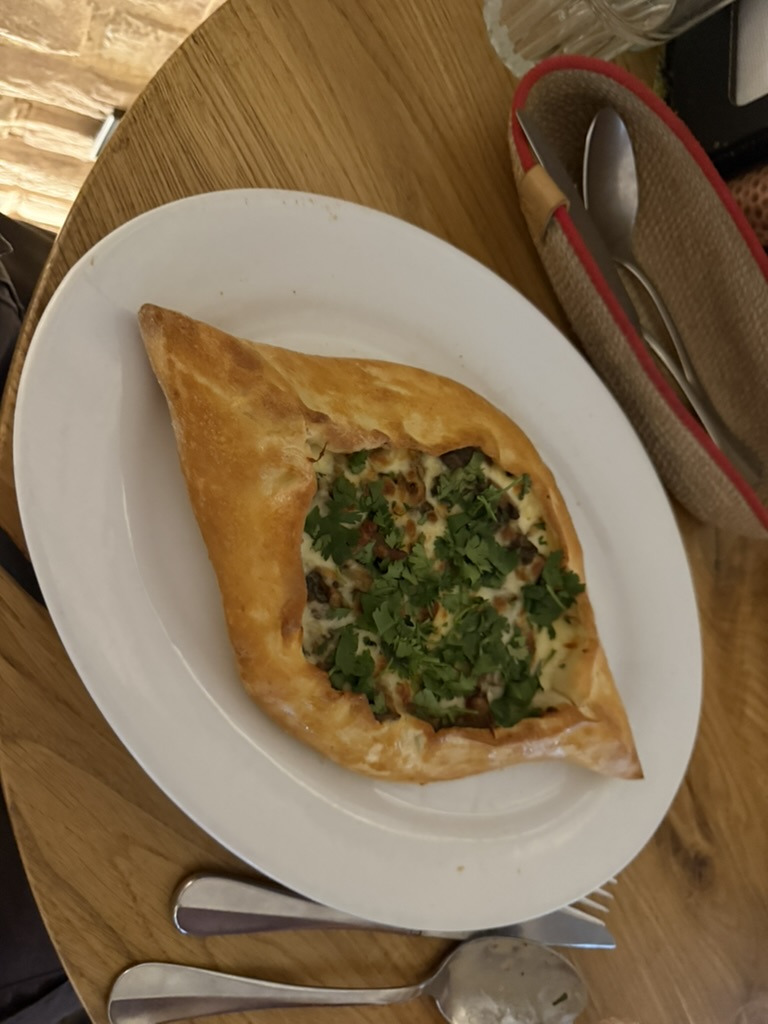
In conclusion
I wouldn’t have experienced any of this without Julia and her family being such amazing friends, hosts and guides. Юліє, щиро дякую за вашу гостинність і доброту.
The main thing that sticks with me after all these experiences is how significant cultural elements are subtly woven into otherwise normal activities — like wearing vyshyvankas to dinners and in museums, traditional folk music by proper bands in the open-air museum (and restaurants, which I’ve experienced on other occassions). It speaks to the richness and liveliness of Ukrainian culture. Conversely, most of my experiences I could imagine seeing in the Netherlands, with small but culturally-significant changes — which shows once again how recognisably European Ukraine is, and yet how diverse and unique in its own right.
